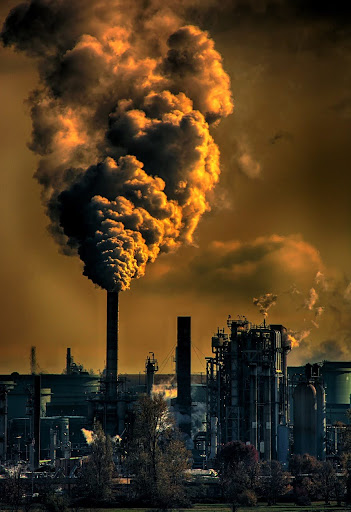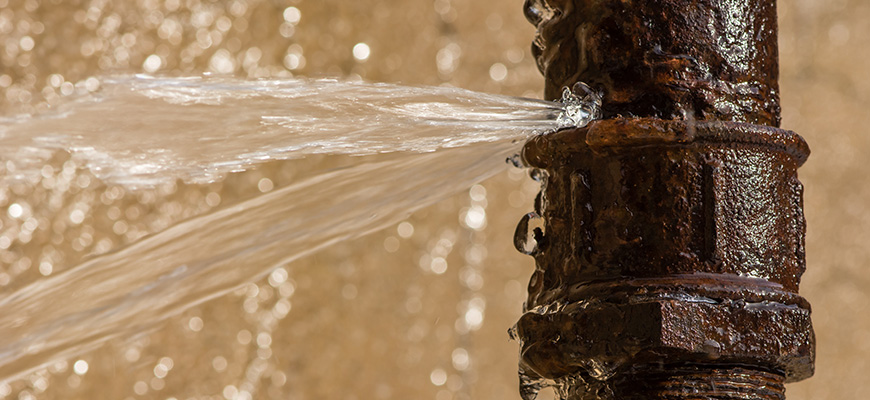Do you ever stop to think about the condition of the pipes delivering your water? Many of us rely on outdated plumbing systems without realizing the potential dangers lurking within them. In this eye-opening article, we will delve into the hidden risks associated with contaminated plumbing systems and provide you with valuable insights to help protect yourself and your loved ones.
Over time, old pipes can deteriorate, leading to a host of problems that can impact the quality of your water. Rust, corrosion, and other issues can result in harmful substances leaching into your drinking water, compromising its safety. From harmful metals like lead to bacteria and other contaminants, the consequences of a contaminated plumbing system can be dire.
But don’t panic just yet! There are steps you can take to safeguard against these risks. Understanding the signs of a contaminated plumbing system, regular maintenance, and installing water filtration systems are just some of the measures you can adopt to ensure the health and well-being of your household.
Join us as we explore the hidden dangers of polluted plumbing systems and learn how you can protect yourself and your family from potential harm.
Common sources of water contamination in old pipes
Old pipes can be a breeding ground for various contaminants that pose serious health risks. One of the most common sources of water contamination in old plumbing systems is corrosion. Corrosion occurs when the pipes degrade over time, allowing harmful substances to leach into the water supply. This can include heavy metals like lead, copper, and iron, as well as other dangerous chemicals.
Another source of contamination is biofilm, a slimy substance that forms on the inner surfaces of pipes. Biofilm can harbor harmful bacteria, including Legionella, which can cause Legionnaires’ disease, a severe form of pneumonia. Additionally, old pipes may contain asbestos, a hazardous material commonly used in plumbing systems before its health risks were discovered.
It’s important to note that the type and level of contamination can vary depending on the age and material of the pipes. For example, lead pipes were commonly used in older homes, presenting a higher risk of lead contamination. Understanding the potential sources of water contamination is crucial in addressing the problem effectively.
Health risks associated with contaminated water
Contaminated water can have serious consequences for your health. Exposure to harmful substances like lead, copper, and other heavy metals can lead to a range of health issues, especially in vulnerable populations such as children and pregnant women. Lead, in particular, is known to cause developmental delays, learning disabilities, and behavioral problems in children.
Bacterial contamination from biofilm and other sources can result in gastrointestinal illnesses, respiratory infections, and even more severe conditions like Legionnaires’ disease. Asbestos, if present in the plumbing system, can cause lung diseases and various types of cancer.
Long-term exposure to contaminated water can have cumulative effects on your health, making it essential to address any potential sources of contamination promptly. Recognizing the symptoms associated with contaminated water and regularly testing your water supply are crucial steps in protecting yourself and your family.
Signs that your plumbing system may be polluting your water
While water contamination may not always be immediately visible, there are some signs that can indicate contaminated plumbing systems. If you notice any of the following, it’s important to investigate further:
- Discolored water: If your tap water has a brown, yellow, or rusty tint, it could be a sign of corrosion or the presence of metals like iron or copper.
- Foul odor or taste: Unpleasant smells or tastes in your water could indicate bacterial contamination or the presence of chemicals.
- Sediment or particles: If you notice particles or sediment in your water, it could be a sign of pipe deterioration or other issues with your plumbing system.
- Decreased water pressure: Corroded pipes can lead to reduced water pressure, indicating potential problems within the plumbing system.
If you observe any of these signs, it’s important to take action to identify and address the source of contamination.
Testing your water for contaminants
Testing your water is an essential step in determining whether it is contaminated and identifying the specific contaminants present. There are various testing options available, from DIY test kits to professional laboratory analysis. DIY test kits typically provide basic information about the presence of common contaminants like lead, bacteria, and chlorine. However, for a more comprehensive analysis, it’s advisable to consult a professional laboratory.
When testing your water, it’s important to collect samples from multiple points in your home, including taps used for drinking and cooking. This will give you a more accurate representation of the overall water quality in your plumbing system. Once you receive the test results, you can work with experts to develop a plan for addressing any identified contaminants.
Steps to take if your water is contaminated
Discovering that your water is contaminated can be concerning, but there are steps you can take to mitigate the risks. The specific actions you should take will depend on the type and level of contamination present. Here are some general steps to consider:
- Contact a professional plumber: A qualified plumber can help assess the condition of your plumbing system and identify the source of contamination. They will have the expertise to recommend appropriate solutions based on the specific issues found.
- Install a water filtration system: Depending on the contaminants present, a water filtration system can effectively remove or reduce them, ensuring cleaner and safer water for your household. There are various filtration options available, including activated carbon filters, reverse osmosis systems, and UV disinfection systems.
- Replace old or corroded pipes: If your plumbing system consists of outdated or corroded pipes, it may be necessary to replace them to eliminate the source of contamination. Consulting a professional plumber is crucial to ensure the new pipes are installed correctly and meet safety standards.
- Flush the system: Flushing your plumbing system can help remove any loose debris or sediment that may be contributing to contamination. This involves running cold water through all taps for several minutes to flush out any potential contaminants.
By taking these steps, you can significantly reduce the risks associated with contaminated water and ensure the health and safety of your household.
Preventing water contamination in your plumbing system
Prevention is key when it comes to water contamination in your plumbing system. By implementing certain measures, you can reduce the likelihood of contamination and maintain the quality of your water. Here are some preventive steps to consider:
- Regular maintenance: Schedule regular inspections and maintenance for your plumbing system to identify and address any potential issues before they become major problems. This can include checking for signs of corrosion, leaks, or other damage, as well as cleaning and disinfecting the system periodically.
- Avoiding harmful substances: Be mindful of what goes down your drains. Avoid pouring chemicals, grease, or other harmful substances down the drain, as they can damage the pipes and contaminate the water supply.
- Flushing the system: Flushing your plumbing system regularly can help remove any accumulated sediment or debris, reducing the risk of contamination. This can be done by running cold water through all taps for a few minutes every few months.
- Temperature control: Maintaining appropriate water temperatures can help prevent the growth of harmful bacteria like Legionella. Ensure that your hot water heater is set to a temperature of at least 120°F (49°C) to inhibit bacterial growth.
By incorporating these preventive measures into your routine, you can minimize the chances of water contamination in your plumbing system and promote a healthier living environment.
Upgrading your plumbing system for safer water
If you have an older home with outdated plumbing, it may be worth considering upgrading your system to ensure safer water. Upgrading your plumbing system can involve replacing old pipes with newer, safer materials, such as copper or PEX (cross-linked polyethylene), which are less prone to corrosion and contamination.
When upgrading your plumbing system, it’s important to consult with a professional plumber who can assess your specific needs and recommend the most suitable options. They can guide you through the process, ensuring that the new system meets safety standards and provides reliable, clean water for your household.
Hiring a professional plumber for water quality assessment
If you have concerns about the quality of your water or suspect contamination in your plumbing system, it’s advisable to hire a professional plumber for a water quality assessment. A professional plumber can conduct a thorough inspection of your plumbing system, test your water for contaminants, and provide expert recommendations for addressing any issues found.
When hiring a professional plumber, be sure to choose a licensed and experienced professional who specializes in water quality assessments. They should have the necessary equipment and expertise to accurately assess the condition of your plumbing system and provide reliable solutions.
By investing in a professional water quality assessment, you can have peace of mind knowing that you have a comprehensive understanding of your water’s safety and take appropriate actions to protect your health.
Conclusion: Ensuring clean and safe water for your home
The hidden dangers of contaminated plumbing systems are a serious concern that should not be overlooked. From harmful metals like lead to bacteria and other contaminants, the consequences of a polluted plumbing system can have detrimental effects on your health and the well-being of your household.
However, by understanding the potential sources of water contamination, recognizing the signs of a contaminated plumbing system, and taking proactive measures, you can ensure clean and safe water for your home. Regular maintenance, water filtration systems, and professional assessments are all valuable tools in safeguarding against the risks associated with old pipes.
Don’t wait until it’s too late. Take action now to protect yourself and your loved ones from the hidden dangers of contaminated plumbing systems. By prioritizing the quality of your water, you can enjoy the peace of mind that comes with knowing your household is being provided with safe, clean water.
Photo byChris_LeBoutillieronPixabay


